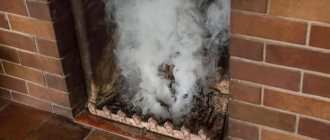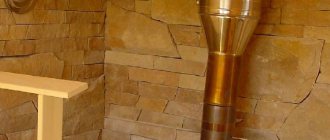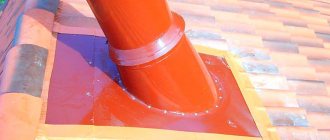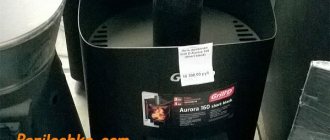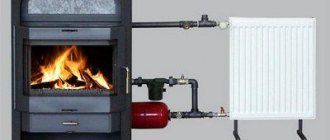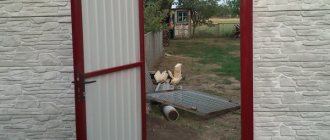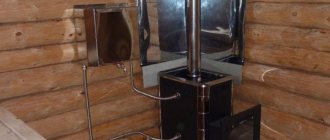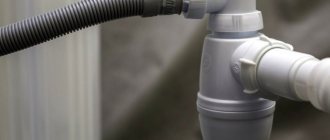soot on the walls in the bathhouse There are probably no people who would not like to sometimes take a steam bath in a Russian bathhouse. And therefore it is very important that it looks neat and clean.
Every owner knows perfectly well that the walls in the bathhouse must be periodically cleaned from soot and dust.
If this is not done in a timely manner, the accumulating plaque will very quickly begin to penetrate deep into the pores of the wood, changing its original color and smell.
Where does the soot come from?
Untreated tree trunks are used to build a bathhouse.
The smell of wood under the influence of steam plays the role of a flavoring agent. But the open pores of wood are very susceptible to absorbing soot and soot. Soot, flying out of the oven door and through other holes, smokes unnoticeably, but after a couple of weeks the entire ceiling is covered with a black layer. Together with moist air, a layer of soot covers the walls of the bathhouse and penetrates deep into the wood.
Cleaning wood from soot and soot requires some effort and means.
We recommend
DOCKER MAZBIT PLUS is a concentrated product for cleaning surfaces from the effects of fire. Designed for effective quick cleaning of any surfaces (wood, concrete, plaster, stone, tiles) from various contaminations by combustion products, such as soot, soot, carbon deposits. Without smell. Does not contain chlorine or acid.
More details
How to clean soot after a fire How to remove soot from bricks How to clean soot in a bathhouse
The most effective way to get rid of soot and soot
If you notice that the wood in your bathhouse has darkened, then try to put into practice the tips that will be described in this article.
One of the accessible, but rather labor-intensive methods is to remove plaque mechanically.
You can take an ordinary scraper or a metal brush and remove the dark spots that have formed, centimeter by centimeter.
This process, of course, will require a lot of time and effort, but with careful processing you can thoroughly clean the entire surface.
You can also clean the surface with a stiff brush after each heating, when the bath has completely cooled down, removing fresh deposits that have just settled on the surface.
There is a slight disadvantage to this method: the wood is not always smooth and even, sometimes there are various irregularities and knots, and extracting soot from such places will be very problematic.
Of course, these methods are quite labor-intensive, but with such careful care you can keep your bathhouse clean.
Another interesting way to clean the surface is to use a sander.
This method will greatly facilitate the process, but as a rule, the sanding cloth cannot reach the joint areas and will still have to be processed manually.
This is especially true if your bathhouse is made of round timber or logs.
This method is not the most effective. After cleaning with a sander, the surface should be washed with soapy water to wash off the dusty layer that the machine forms.
The best way to clean the walls in a bathhouse is to use specially developed chemicals.
These solutions are absolutely safe for humans and the environment. When washed with running water, they are completely removed, cleaning any wooden surface from soot, soot and other deposits. Even if you like to steam at very high temperatures, after cleaning you don’t have to worry about any fumes.
The cleaning process is very simple, apply the solution to the wooden surface, depending on the contamination, different exposure times are required, and then thoroughly rinse the surface under running water. Special organic additives will do all the work for you in a very short time. And you will no longer be bothered by the problem of how to clean the walls in the bathhouse.
The chemical cleaning method is very effective, because industrial cleaners gently and carefully act on any surface, be it wood, plastic, brick, metal or glass.
Special cleaning products are non-allergenic, non-toxic and safe for health. Using them is a pleasure, because chemicals for cleaning soot and soot are easily washed off with water and quickly erode.
Step one is to apply the product to the surface using a soft brush.
Step two is the waiting time (until the cleaner works).
Step three is to remove the product from the wall using a soft cloth and warm soapy water.
For large bath complexes this is an ideal option. You can use a hose to wash the product off the wall.
And now your wall in the steam room shines again.
When using special detergents, we recommend that you follow safety precautions and be sure to use rubber gloves, a mask and safety glasses.
How to deal with soot in a bathhouse?
There are several ways to clean a sauna from soot. You can choose any one, but the main thing is to compare the costs of time, effort and money.
Method one
A proven method for real housewives has always been to wash away dirt from the walls. Add detergent to the water, take a rag and brush and begin to scrub off the soot.
Advantages: the method has been proven for centuries and does not require special material costs.
Disadvantages: labor-intensive process; the soot is not washed off, but rubbed onto the wood; soot ingrained into the wood is not washed off at all; Over time, the wood simply takes on a black tint.
Method two
Mechanical removal of soot, when it is scraped from wood with special scrapers, a stiff brush or a grinding machine.
Advantages: all deposits, including mold, are removed along with the soot.
Disadvantages: too much physical effort and time must be spent; Irregularities in the wood (knots, depressions, chips) are still not completely cleaned.
Method three
A modernized method of cleaning a bathhouse from soot using chemicals.
Advantages: oily substances in soot are completely dissolved; the tree is completely cleaned; environmentally friendly product; retains its properties at any temperature.
Disadvantages: the only disadvantage may be the lack of money to purchase special tools.
After many years of use in the bathhouse, soot appears on the walls. Several methods are used for cleaning:
- 1. Mechanical devices. Use a sharp metal object to scrape off soot from the walls. This method requires a lot of time and effort. To make it easier, you can use a sanding machine.
- 2. Traditional methods. To remove soot, use crushed sand or brick. These products act as a scrub, removing soot from the walls. To avoid contamination, you can wipe the walls with soapy water after each heating of the sauna.
- 3. Chemical compositions. Special washes allow you to quickly and effectively clean the walls of a bathhouse from soot. Such products contain special alkaline substances that easily cope with soot formation.
How to remove soot from walls
Wood is a porous material, so soot settles not only on top, but is also absorbed deep into the wooden walls. You need to clean it constantly so as not to turn the bathhouse into a black firebox.
Method 1
We wash off the soot from the walls with a stiff brush, adding detergent. You will have to make a lot of effort to remove the soot that has stuck to the walls.
If the layer is too thick, you need to act more radically. Using a scraper or other sharp object or a grinding wheel, the soot is removed along with the top layer of wood.
Method 2
Among the modern methods of removing soot from walls in a bathhouse, the most effective is the chemical method.
A special remover has the ability to break down viscous soot molecules.
The prepared solution is applied to the wall for a while and then washed off with water.
We get clean, undamaged walls with minimal physical effort.
Special chemicals for soot removal
There are also folk tips on how to remove soot from lining in a bathhouse and steam room. You can use a soap solution for this. However, this event will require a lot of time and effort. Additionally, improvised abrasive materials such as river sand or crushed brick are sometimes used.
The surface must first be vacuumed. Then everything is thoroughly rubbed with soapy water. But in this case, you also cannot count on an ideal result if the surface is seriously contaminated. Therefore, sometimes you have to combine different methods and look for how to wash soot and soot from the lining in a bathhouse and steam room in more reliable ways.
Soot, like ash, is a product of the combustion of wood, coal, fuel oil, etc. It contains black oily substances that penetrate deep into the porous wooden walls of the bathhouse.
Tight adhesion is favored by a humid environment and temperature changes.
Soot collects moisture, but it is not easy to clean off.
The walls in the bathhouse, close to the stove, and the ceiling become covered with a thick layer of black soot over time. The room looks dirty and unpleasant, fumes from soot are harmful to health.
In order not to cause allergic reactions when soot gets into the respiratory tract, you need to solve the problem in time, how to clean soot from the walls in a bathhouse.
- A mechanical method for removing soot from wooden bathhouse surfaces. This method can be divided into two. In the first case, a sharpened metal spatula is used to scrape off soot from surfaces. For the second, you will need some kind of abrasive; it is used to attack the dirt, gradually erasing it. However, in addition to the fact that this is not effective enough, with such actions you can also damage the wood itself. It forms grooves, burrs and chips, into which even more soot will accumulate over time. In addition, it will not be possible to get to hard-to-reach places.
- Chemical cleaning of wood. This option involves the use of special chemical solutions. They are prepared in accordance with the instructions and treated the surface of the walls or ceiling. After you have succeeded in removing the soot from the tree in the bathhouse, the product is washed off with clean water. This method is different in that it allows you to achieve maximum effect in a very short time. In this case, labor costs are minimal, and the surface remains in its original form, without any damage. Deep penetrating ability allows you to get rid of soot with virtually no mechanical impact.
The use of chemicals is relevant for both private baths and public bath complexes. Their composition is designed in such a way that, when used correctly, the product does not have a harmful effect on human health and the environment. However, it is recommended to wear rubber gloves when cleaning the premises.
An important point is that before washing soot from wood in a bathhouse using a chemical, it is necessary to remove its excess that is on the surface using a vacuum cleaner. This will increase the effectiveness of the product and reduce processing time. You can use a regular broom for this purpose, but under no circumstances should you put too much pressure on it, otherwise the soot will penetrate deeply into the wood and its removal will become much more difficult.
We recommend
How to clean the walls in a bathhouseHow to remove soot from a stone in a bathhouseHow to clean soot from the lining in a bathhouse
There are special chemical liquids designed to completely neutralize soot and unpleasant odors after fires. They are not sold in every store, but it is quite possible to get them in specialized retail outlets. They perfectly remove soot even from porous surfaces such as concrete and brick.
The most popular effective professional soot neutralizers:
- Facade cleaner No. 2.
- Mazbit.
- Clean-Dezo.
- BZ-20.
The products are available in the form of colorless liquids poured into plastic canisters.
These were the most effective recommendations on how and how to wash off soot on your own. If there is extensive soot after a fire, it is better to call a special service for your own safety. A burnt-out room has a high concentration of toxins and it is necessary to work in it in a special protective suit.
If you don’t want to waste time going to a specialized one, there is a second, less effective way to clean the walls of a bathhouse from soot - mechanical cleaning.
It is possible to wash the walls of soot manually, but it is not so easy. Why, you want to know? Mechanical removal of soot is a very labor-intensive, difficult and time-consuming method. It will take a lot of your time and effort, and the result is unlikely to please you.
When cleaning walls in this way, they often use metal brushes or sandpaper, which can damage and ruin the walls. For example, burrs and unevenness may appear on a wooden surface, and the appearance will no longer be the same.
How to clean the walls of a bathhouse from soot is up to you, but we tried to tell you how to do it correctly, effectively, without hard, exhausting work.
We hope our advice will be useful to you and serve you well. And if you have any related questions, ask us. Write or call, the managers of Docker Chemical GmbH Rus will definitely answer you.
Cleaning walls and ceilings
Solving the problem of how to clean soot in a bathhouse begins with a vacuum cleaner. To do this, you need to walk it on wooden surfaces. Next, you need to carefully sweep away the soot and soot from the walls and ceiling with a broom.
Prepared surfaces must be cleaned with specially impregnated sponges. They are sold in hardware stores. During the manufacturing process, such sponges are impregnated with special compounds that destroy soot and soot.
Sponges get dirty quickly, so you need to purchase several of them at once. You can extend the service life by cutting off the soiled layer of the sponge. When the soot and soot are completely removed, you can clean the surfaces of the walls, floors and ceilings with aqueous solutions of detergents.
Abrasive powders cannot be used in this case. They spoil the structure of wooden surfaces.
To clean hard-to-reach areas, it is better to use a mop with a long handle.
Surfaces are washed 2-3 times. In this case, the water must be changed periodically, adding a new portion of detergent to it.
When the question of how to clean the lining in a bathhouse from soot has been resolved, you need to rinse off the cleaning solution with clean water. For this it is better to use running water. It is better to feed it from a hose under low pressure.
At the end of the process, wipe the washed surfaces dry with a clean soft cloth. You can use an old bath towel. A large amount of moisture or poor thermal insulation may cause the lining to turn black. In this case, the answer to the question of how to clean the lining in a bathhouse will be a grinding machine, but this is if the darkening has affected only the surface layer of wood.
To clean walls lined with clapboard, you will need an angle grinder with a power of no more than 1 kW and a flap wheel with a diameter of 125 mm (grit size no more than 40 units). The lining is sanded in such a way as to remove the darkened layer to a depth of approximately 3 mm.
We suggest you read: How to remove mold in a bathhouse
If the blackness has been absorbed to a great depth, the lining can be painted. But not in the steam room. No paint coatings are used here at all. You can replace the darkened lining partially or completely with new material.
Impregnating compositions for bleaching darkened wood, prepared on the basis of chlorine, are not recommended, since the carbon particles that determine the dark color of the walls are practically not discolored by compositions containing active chlorine.
Over time, unaesthetic dark spots appear on the surface of the bathhouse logs on the outside, which spoil the appearance of the structure.
Liquid bleach can be used to remove such stains. It is applied to a surface that has been previously cleaned of dust and dirt. For work, brushes with artificial bristles are used, which need to be changed periodically, because the cleaning composition corrodes them. Before applying, you need to test its effect in an inconspicuous place.
The product is carefully distributed over the entire surface and left for some time according to the instructions on the package. Then you need to rinse the surface with running water from a hose. Next, the bathhouse is ventilated to remove the pungent odor of bleaching agents.
If the blackening penetrates to a greater depth, the logs can be sanded with a grinder. In this case, safety precautions must be observed.
To clean the shelves in the bathhouse, you can use a car wash. Water is supplied through it mixed with air and under high pressure. This helps to easily remove the top layer from darkened wood. In this way you can also clean the floors, walls and even the ceiling in the bathhouse.
To thoroughly clean the floor in the bathhouse, you can use a plane, preferably with an electric drive. First, the floorboards must be carefully removed and thoroughly dried, then processed with a plane. In this case, the top layer of wood on each side is removed to a depth of 5 to 10 mm.
This type of cleaning often results in sharp edges on the floorboards. They can be removed with a belt or vibratory sander. You can also use these devices to clean up darkened wood instead of using a plane.
If the darkened layer of wood is thin, you can simply sand the surfaces with sandpaper. An electric drill with a special attachment will help make the process easier. You can only work with completely dry surfaces.
This method will help you get into corners and other hard-to-reach places. There is no need to remove individual elements.
This treatment is often recommended when answering the question of how to clean aspen seats and other wooden surfaces in a bathhouse. After processing and sanding with sandpaper, they will not only be clean, but also absolutely smooth.
Due to the hardness of tap water, the question periodically arises of how to clean the tank in a bathhouse from scale that settles on the walls and bottom. Since scale is formed from lime deposits, it must be cleaned with acid.
Acid can only be used of organic origin. For example, lemon or vinegar. Any inorganic acid is unsafe for the metal from which the tank is made. It should be remembered that the amount of acid used to clean the tank should approximately correspond in weight to the amount of lime deposits on the walls of the heating tank.
The water passing through it will be purified from a significant amount of impurities. This will greatly reduce the level of scale formation.
The required amount of water for hygiene procedures is often provided by drawing water from a nearby reservoir, well or borehole. Before use, it is necessary to thoroughly clean the bath water from various impurities, silt, sand, and small pebbles.
The main methods of water purification are filtration and sedimentation. You can buy a special water filter in a store or make it yourself. For this you can use a fine mesh.
To settle, water is poured into a large tank about a day before its intended use. During this time, all impurities will gradually settle to the bottom of the tank. From above it will be possible to take clean water suitable for hygiene procedures.
The basic rule: the settled water should be taken from above, trying not to raise sediment. The water is not used until the end. It is better to pour the remains into the drainage well along with the sediment. Therefore, you need to prepare water with a reserve.
The formation of soot and plaque on the walls in a Russian bath occurs as a result of a fire hazard or improper operation of heating equipment.
The smallest particles of soot can not only settle on wooden surfaces, but also penetrate deep inside. For this reason, it is important to promptly get rid of unpleasant plaque on walls and other surfaces.
How to quickly and effectively wash off soot in a bath without harming the wood?
Wood is a natural material that is highly hygroscopic. Together with water, wooden surfaces can absorb any type of contaminant - soot, soot, sweat, dust, etc. Therefore, it is not recommended to clean wood floors, walls and ceilings covered with soot with water.
When considering the question of how to wash off soot in a bathhouse on walls and other bases, you need to exclude the following products:
- water;
- laundry or liquid soap;
- soft or abrasive sponges;
- hard brushes;
- spray.
We suggest you read: How to remove yellow stains on armpits on white and remove the smell of sweat?
Such products can be used for final cleaning after carbon deposits have been removed from the wood.
To clean the walls and floor of the bathhouse from plaque and soot, it is recommended that all work be carried out using personal protective equipment:
- rubber gloves;
- glasses;
- gauze bandage or petal respirator;
- robe;
- cap or scarf.
Many owners wonder how to clean a bathhouse from dirt and soot with their own hands. There are two cleaning methods available:
- mechanical devices;
- chemical compositions.
You can safely remove the resulting soot from ceiling, wall and floor surfaces using special devices - a scraper with a sharp base or a spatula. They allow you to dry clean every centimeter of surface dirt. To put this cleaning method into practice, you will need a lot of free time and physical endurance.
To prevent serious contamination of surfaces, after each firing of the sauna stove, the floor and walls must be thoroughly cleaned with a soft brush intended for wood.
To simplify the task of removing soot, experts recommend using a grinding machine with a flap-type wheel with a diameter of up to 12.5 cm and a grain size of 35 units. You can remove the resulting dust after cleaning the surfaces with a clean rag and soap solution.
The simplest and most reliable way to remove contaminants is to use liquid chemical compounds. They are evenly applied to the surface to be treated according to the instructions, and after a while they are washed off along with the dirt. Highly concentrated preparations contain alkaline components that promote rapid removal of soot from surfaces without damaging the wood structure.
To quickly clean walls and floors, you can use a mop with a telescopic handle.
No less effective in the fight against soot are chemical sponges impregnated with deep penetration substances. They contribute to the quick and safe removal of the smallest particles of soot and soot that have penetrated the wood structure.
The principle of working with sponges is quite simple: holding the sponge with one hand, clean the surface from top to bottom.
Finally, it is recommended to wash the cleaned surface with clean water and wipe dry with a soft cloth. This is done as follows: the floor is covered with film or oilcloth to protect the surface from further contamination.
Next, clean water is poured into the container, to which a detergent composition, for example, for washing dishes, or any other degreasing agent is added. The soot is washed off with smooth movements using a soft sponge.
Features of chemical cleaning
Due to their qualitative characteristics, chemical preparations easily solve the problem of how to clean a bathhouse from soot. The soot cleaner is made from alkaline composites and organic additives:
- breaks down resinous substances in soot very quickly;
- removes all plaque on walls, ceilings, pipes;
- cleans even old places.
Most often, the preparations are concentrated and therefore diluted with water. The composition of the drug is made without aggressive components. Chemicals dissolve quickly, do not accumulate on wood, are fireproof, and non-toxic. You don't have to worry about your health.
It is better to apply the product to wooden surfaces with a sprayer, and then rinse again with clean water. If traces of soot remain, the removal procedure must be carried out again.
Buy a detergent
You can buy a product for cleaning bath soot from walls in a specialized store of our company.
The concentrated water-based product has an enhanced effect on soot, an environmentally friendly composition, and high resistance to temperature changes.
On the company’s website you can view the product catalog and order any batch of detergent for cleaning soot from the manufacturer at affordable prices.
You can buy chemicals to combat soot in the bathhouse in specialized stores or leave a request on our website.
